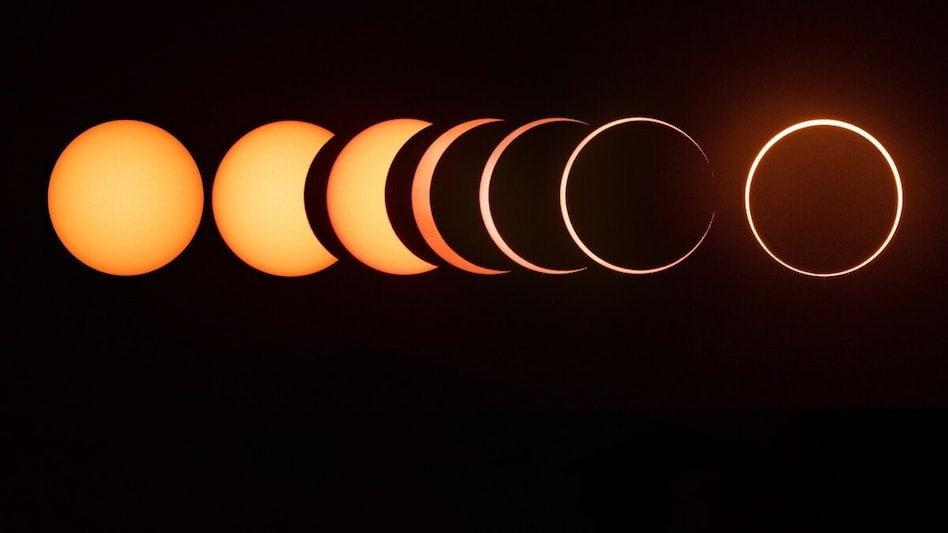 Although not visible in India, regions like northeastern Canada, the northeastern United States, and parts of Europe will witness significant coverage.
Although not visible in India, regions like northeastern Canada, the northeastern United States, and parts of Europe will witness significant coverage. Although not visible in India, regions like northeastern Canada, the northeastern United States, and parts of Europe will witness significant coverage.
Although not visible in India, regions like northeastern Canada, the northeastern United States, and parts of Europe will witness significant coverage.The eagerly awaited partial solar eclipse, the first of 2025, is set to occur on March 29. This astronomical event will begin at 2:20 pm Indian Standard Time (IST) in the Atlantic Ocean. As the Moon moves between the Earth and the Sun, it will partially obscure the Sun's light, creating a partial eclipse visible across various regions in the Northern Hemisphere. The eclipse will spread widely, concluding at approximately 6:13 pm IST in northern Siberia, offering a unique celestial spectacle for millions of observers.
Although not visible in India, regions like northeastern Canada, the northeastern United States, and parts of Europe will witness significant coverage, with up to 93% of the Sun obscured in certain areas. Major cities like New York City and Boston are expected to witness this remarkable event at sunrise.
In Europe, the eclipse will manifest as a shallower event, with coverage varying across different locations; for instance, Reykjavik in Iceland is predicted to experience about 66% obscuration of the Sun. Additionally, parts of Africa, Siberia, and the Caribbean will have the opportunity to view this partial eclipse.
Despite its widespread visibility, the partial solar eclipse will not be observable from India. The path of the Moon's shadow will not cross India or neighbouring countries, such as Pakistan and Sri Lanka. Consequently, those in India interested in the eclipse will need to consider travelling to countries where the phenomenon is visible or rely on live streams available online to witness it. This limitation underscores the global nature of such celestial events, which offer viewing opportunities to different parts of the world each time.
The partial solar eclipse is a reminder of the importance of safe viewing practices. Unlike during total solar eclipses, where the Sun is completely covered, partial eclipses require continuous vigilance. Observers must utilise proper eye protection, such as eclipse glasses or solar viewers, to prevent severe eye damage from directly viewing the Sun. Ordinary sunglasses do not provide adequate protection and should not be used for this purpose. Observing these safety guidelines ensures that viewers can safely enjoy the celestial display.
This partial solar eclipse comes shortly after a total lunar eclipse was visible in several parts of the world, continuing a season of exciting astronomical phenomena. While those in India may miss out on this particular solar event, the astronomical calendar remains full of opportunities for sky watchers to witness and appreciate the cosmos. Such events continue to captivate the public imagination, highlighting the intricate dance of celestial bodies within our solar system.